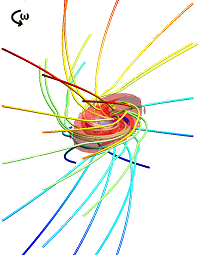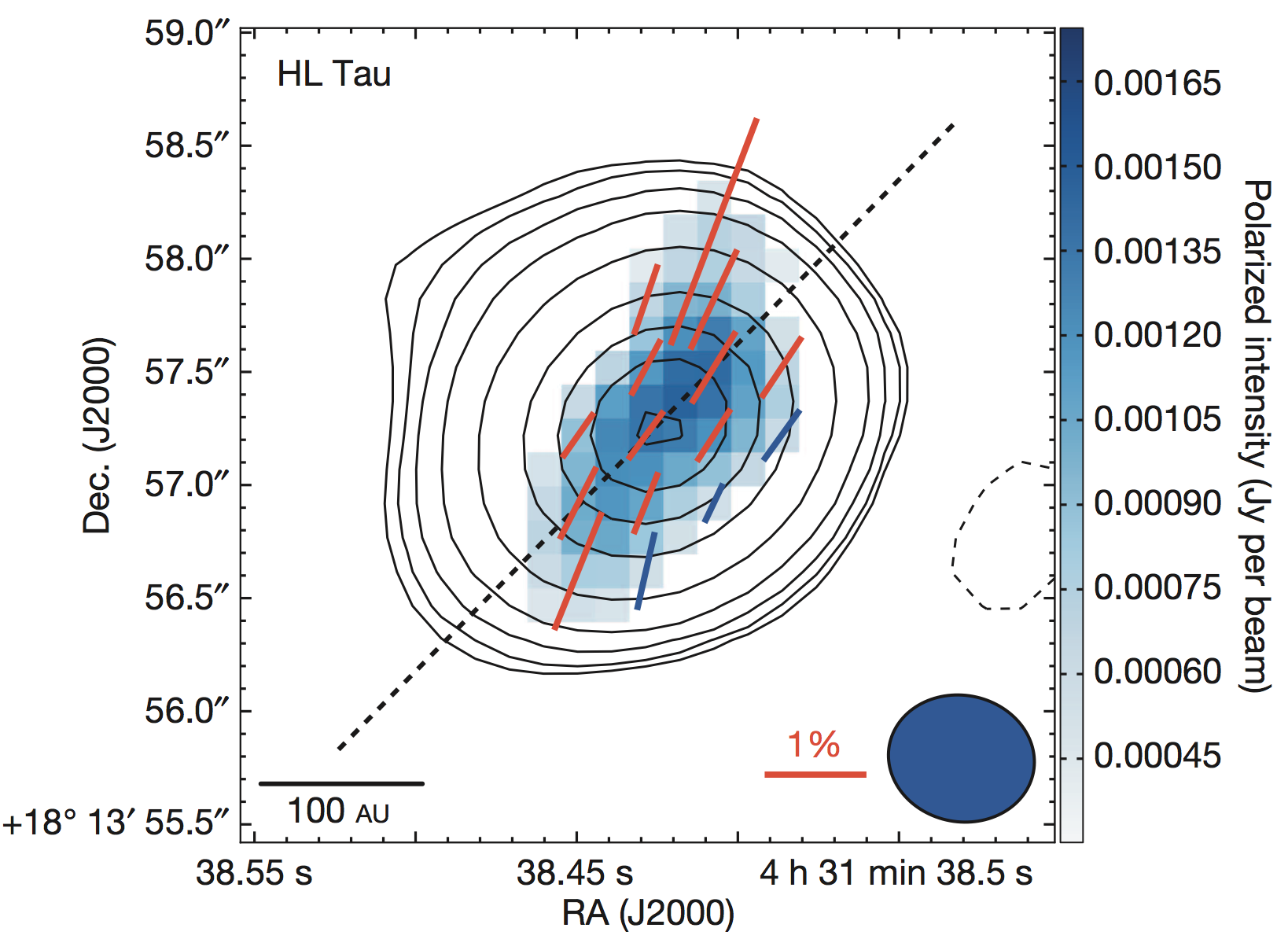For the first time astronomers have been able to capture the magnetic field in the accretion disk around a young star. The shape of the field was a big surprise. The discovery suggests that magnetic fields play an important role in forming a planetary system like our own, but that the process is more complicated than our current understanding. The research results have been published in Nature today.

Stars are formed in cold and dense cores of molecular clouds. During the collapse of a core into a new young star (called a protostar) a circumstellar disk is created. This disk will eventually form planets and become a system like our solar system. However, in the early stages, this circumstellar disk is responsible for allowing mass to accrete on the protostar. This accretion is thought to be regulated by magnetic fields. Different theoretical models suggest different magnetic field morphologies. The magnetic fields in the disk may be toroidal (i.e., circular fields in the disk) or poloidal (i.e., fields emanating from the poles of the protostar). Unfortunately, numerous observations in search of the magnetic field morphology have found no detection.
An international team of astronomers, with SRON astronomer Woojin Kwon, used the Combined Array for Research in Millimeter-wave Astronomy (CARMA) of radio telescopes located in California, U.S.A., in an attempt to determine the shape of magnetic fields in the disk of the T Tauri star HL Tau. T Tauri stars are class of very young stars, still in the process of gravitational contraction. HL Tau has been forming for approximately 1 million years and is located 450 light-years away. From Earth, HL Tau has the brightest T Tauri star disk at millimeter wavelengths.

CARMA did indeed capture a magnetic field, which is the first detection of the magnetic field morphology in a T Tauri star disk.”The discovery suggests thatmagnetic fields are important in forming a planetary system like our own,” Woojin Kwon says. ” While the magnetic field appears significantly more toroidal than poloidal, neither morphology is a good fit. This is at odds with current theoretical expectations, which suggests that the role of magnetic fields is more complicated than our current understanding.” Future observations with the Atacama Large Millimeter Array in Chile are forthcoming and will provide better insight on the role of magnetic fields in circumstellar disks.
Publication
The paper Spatially Resolved Magnetic Field Structure in the Disk of a T Tauri Star has been published today in Nature (DOI: 10.1038/nature13850). Authors are Ian W. Stephens (University of Boston/Illinois), Leslie W. Looney (University of Illinois), Woojin Kwon (SRON Netherlands Institute for Space Research), Manuel Fernández-López (University of Illinois, Instituto Argentino de Radioastronomía), A. Meredith Hughes (Wesleyan University), Lee G. Mundy (University of Maryland), Richard M. Crutcher (University of Illinois), Zhi-Yun Li (University of Virginia) and Ramprasad Rao (Academia Sinica).


